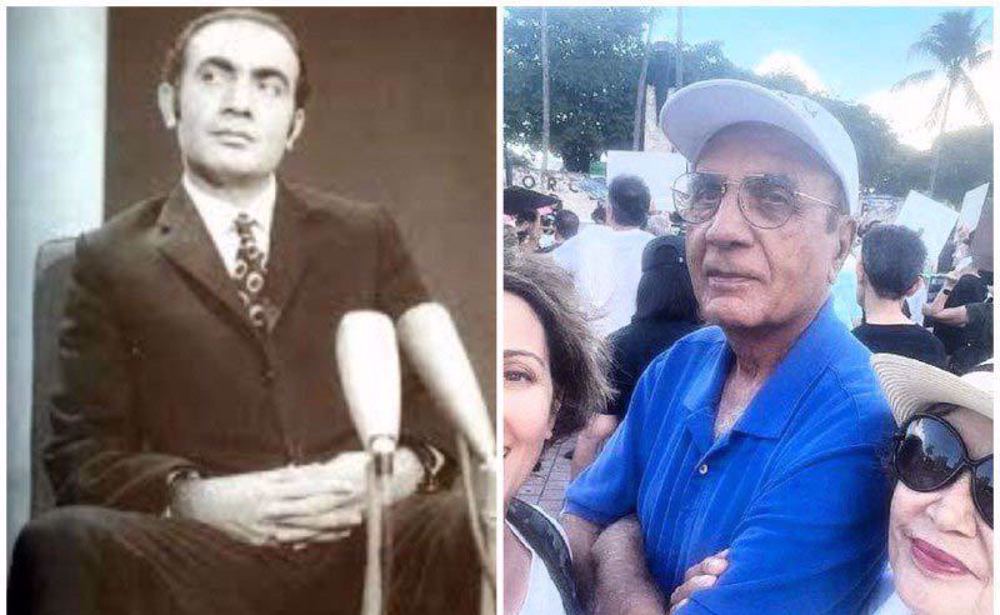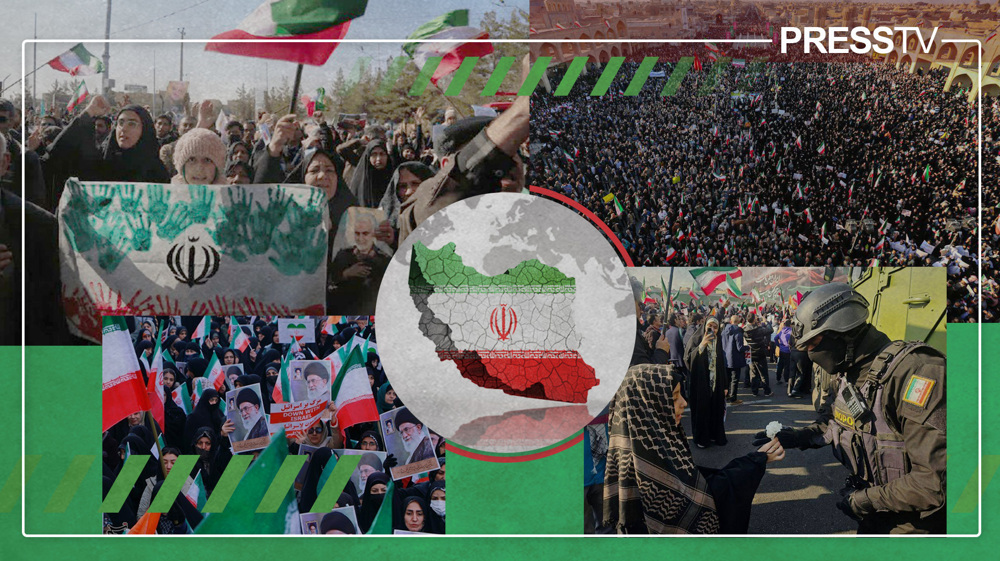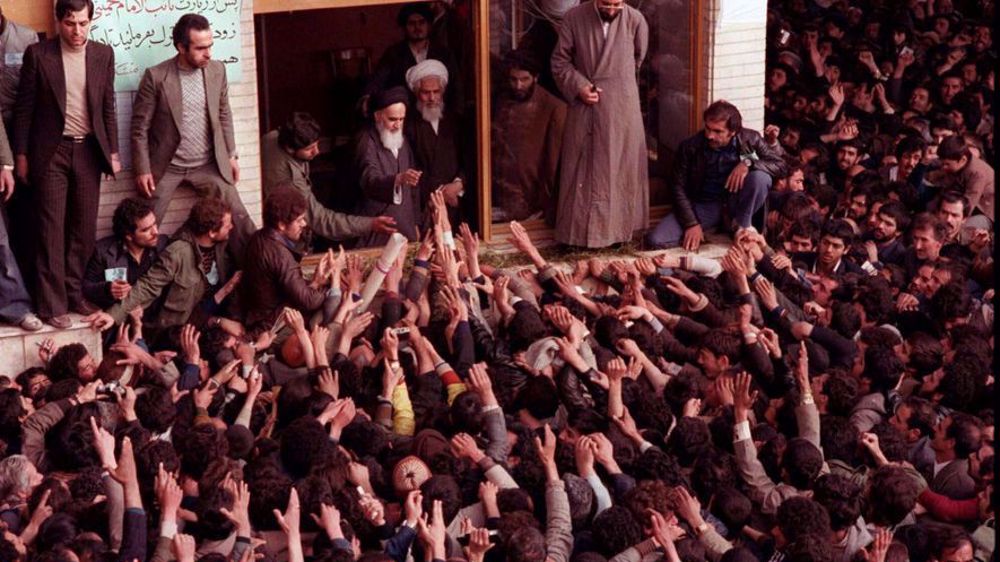SAVAK’s chief torturer with blood on hands joins ‘regime change’ farce
By Syed Zafar Mehdi
A few hundred people poured into the streets of downtown Los Angeles on Saturday – coinciding with the 44th anniversary of the 1979 Islamic Revolution – calling for “regime change” in Iran.
The participants included the members of the anti-Iran terrorist outfit, Mujahedin-e-Khalq Organisation (MKO), monarchists loyal to the Pahlavi family and one familiar face who gleefully posed for pictures amid the circus.
Sporting a blue T-shirt and white baseball cap, the former deputy chief of SAVAK, Mohammad Reza Pahlavi’s so-called “secret police” known for its third-degree torture and other gross human rights abuses, was present with his family at the gathering of “regime change” proponents.
Parviz Sabeti looked the same – iniquitous and remorseless – as he joined the so-called ‘zan, zindagi, azadi’ chorus outside the Los Angeles City Hall with his daughter, who published the (now viral) images on Twitter.
“44 years ago today, our native country fell into darkness. Hoping this year brings light and solidarity,” tweeted Pardis Sabeti, failing to mention the darkness her infamous father brought into the lives of millions of ordinary Iranians, including women of her age.
The irony was not lost on people who have experienced, witnessed or heard about SAVAK’s ruthless torture against political prisoners and ordinary citizens, including women, in the years preceding the 1979 revolution.
There is documented evidence of how undercover SAVAK agents – working directly on the orders of Sabeti – would intimidate, arrest, torture, rape and kill women during the Pahlavi dictatorship. The accounts are so horrific that it reminds one of the Nazi concentration camps.
Traces of it can be found in newspaper archives, research articles, books, and at the haunting prison-turned-museum in central Tehran, which provides a glimpse of torture techniques used by SAVAK.
For the vast majority of these victims, especially women, torture not only damaged their bodies but left indelible scars on their minds, which they continue to live with, or have already died with.
Sabeti got away with it, escaping the country before Imam Khomeini returned triumphantly in February 1979 and the Islamic Republic replaced the West-backed Pahlavi family’s dictatorship. The notorious spymaster found refuge in the West that harps about human rights.
On Saturday, flanked by his family and close friends, Sabeti posed for pictures at the Los Angeles rally – perhaps for the first time since his escape from Iran more than four decades ago. His appearance at the rally in itself puts a big question mark on the agenda of its organizers.
SAVAK was established in 1957 with the assistance of America’s CIA and Israel’s Mossad. The agency was vested with far-ranging powers to use torture against those who expressed dissent against Pahlavis. The Ebrat Museum in Tehran was just one of the torture facilities used by the dreaded “secret police”.
Sabeti and his hirelings specialized in custodial torture, sham trials and summary executions. Interestingly, some of his victims included members of the terrorist outfit MKO, who can now be seen hobnobbing with him.
Many of those interrogated and tortured in the custody of SAVAK included university students, both devout Muslims and secular leftists. Whoever spoke truth to the power faced the music. Many students were poisoned in the Evin Prison or executed without trial and without informing their families.
After decades of hibernation, the notorious criminal gave an interview in February 2012, denying that he was involved in torture or other forms of violence against prisoners. The remarks drew a volcano of anger and outrage from those who had been at the receiving end of his unutterable horror.
A total of 198 former political prisoners who had suffered brutal torture at the hands of Sabeti and his minions issued a strongly-worded statement after the interview was published. They were in no mood to forgive or forget.
On Saturday, following his first public appearance in more than 40 years, social media again erupted in anger, blasting him for faking solidarity with the people of Iran when he should actually be put on trial for horrendous crimes against them.
“It is strange that in these years, no special legal action has been taken against Parviz Sabeti by the victims of SAVAK torture who are now living in America and Europe,” tweeted foreign policy analyst and lawyer Reza Nasri, adding that “necessary legal basis” exists for his prosecution.
“Sabeti was a SAVAK deputy, overseeing torture, abduction, & killing of the then opposition members. Sabeti's name "was synonymous with death and torture" for many Iranians,” tweeted Setareh Sadeqi, a political commentator and podcast host. “We have not forgotten.”
“Iranian diaspora in a nutshell. Your average Iranian uncle in the US, with his blue shirt is Parviz Sabeti — a high-ranking SAVAK official known for his torturing techniques during the Pahlavi era. The guy is missing his bloodthirsty torturing with his fake solidarity,” wrote Arya, a researcher and writer.
“The whitewashing of the likes of Parviz Sabeti gives news of a long road that we must travel together many times,” wrote another Twitter user Leila.
Syed Zafar Mehdi is a Tehran-based journalist, political commentator and author. He has reported for more than 13 years from India, Afghanistan, Pakistan, Kashmir and West Asia for leading publications worldwide.
President Pezeshkian vows historical Iran-Iraq relations will remain stable
Iran’s iron and steel exports up 27% y/y in Apr-Dec
Sudan is scene of 'horror and hell': UN rights chief
Scottish leader vows another independence vote if his party wins in May
Israeli forces, settlers burn homes, shut schools in attacks across West Bank
Intelligence Ministry: 300 ringleaders of foreign-backed riots arrested across Iran
Iran begins easing bans on global internet
Pezeshkian: Any attack against Leader ‘full-fledged’ war with Iranian nation















 This makes it easy to access the Press TV website
This makes it easy to access the Press TV website